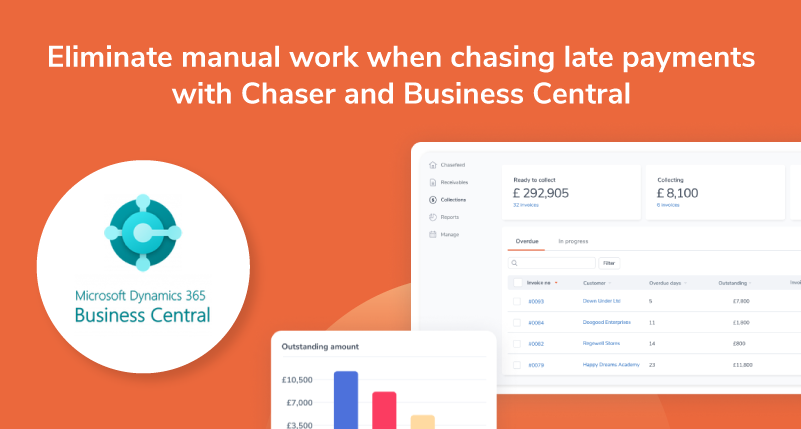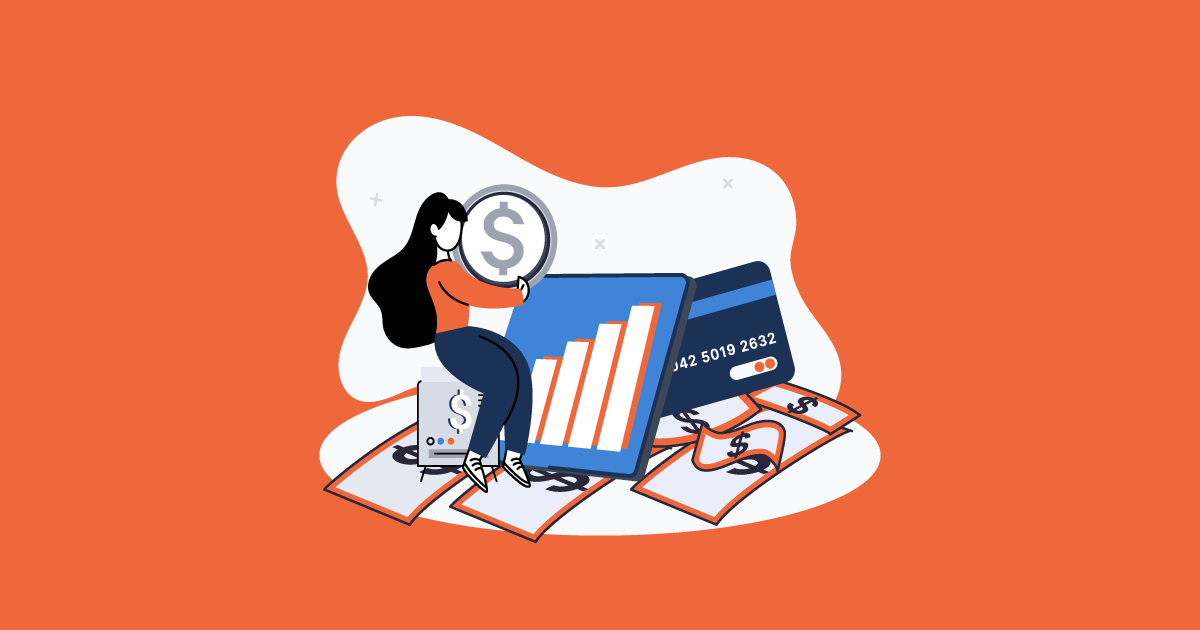Chasing unpaid invoices is a task many businesses face. Even when payment terms are explicitly stated, unpaid invoices can remain an ongoing issue. Unfortunately, cash flow problems caused by payments made after the due date can severely impact your company's financial health. This can harm your business's working capital, stall business growth, affect the company's ability to borrow money, and creates extra work for finance teams. Finding a solution to this time-consuming and costly issue can be problematic. However, early payment discount programs can provide a helpful solution.
Introducing early payment discount incentives
An early payment discount, also referred to as a prompt payment discount, encourages clients to pay sooner and certainly before the due date. Introducing an early payment discount incentive can lead to improved cash flow and speed up your company's accounts receivable processes.
Prompt payment discounts can certainly be advantageous. However, these early pay discounts should not be offered indiscriminately. Instead, they need to be carefully calculated and implemented in order for them to work effectively without further disrupting your business's cash flow.
There is some debate on whether early payment discount schemes should be standard practice in order to incentivise customers to pay early. Some experts believe an early payment discount should only be used as a last resort measure when other methods of collection have failed.
Here, we will explain the different types of early payment discount, the benefits of offering an early payment discount, and the potential pitfalls of offering a cash discount for paying early. This blog also outlines how to implement early payment discounts.
Introducing an early payment discount incentive can lead to improved cash flow and speed up your company's accounts receivable processes.
Types of prompt payment discount
Early payment discounts offer a reward to encourage payments shortly after the original invoice date. This discount rate is the opposite of late payment fees that are designed to discourage poor payment behaviour.
There are a few different types of early payment discounts to consider when introducing a discounted price to customers who pay bills early. These are as follows:
Volume discounts
Volume discounts offer customers lower prices for making larger payments upfront. Therefore, the amount of money paid before the invoice due date will correspond to the discount percentage.
Time-based discounts
Time-based discounts are the most common, as they encourage customers to pay as quickly as possible before the due date to enjoy cost savings.
However, it's important to ensure the time-based percentage discount strikes a balance between ensuring customers have time to pay their invoices while remaining short enough to ensure you don't negatively impact your profit margins with the sales discount.
Setting your early payment discount terms carefully will help you protect your profit margins while still benefiting all parties involved. When calculating your early payment discount terms, there are two primary options: static or dynamic discounting.
Static discounting
A static discount offers a set discount percentage for early payment of eligible invoices, regardless of how quickly the invoice is paid. This can be advantageous as it makes invoice processing simple to calculate. However, your profit margin could be impacted by these payment terms if customers pay at the upper limit of the early payment period.
For example: If you have the usual Net 30 payment terms, you might offer a 1% discount if they pay in the first 14 days.
Dynamic discounting
A dynamic discounting program takes into account how quickly the invoice is paid on a sliding scale. The sliding scale means the customer receives a larger sales discount the sooner the invoice is paid. Sliding scale payment terms like this can encourage customers to pay even faster, as the discount percentage is larger the sooner they pay.
For example, if you have the usual Net 30 payment terms, your early payment discount formula may be 0.5% if they pay in the first ten days, 0.25% for payments in 11-20 days, and so on.
To implement an effective prompt payment discount strategy, you will need to ensure your accounts receivable invoice and payment data are being carefully tracked for all your business transactions. To do this, it's advisable to introduce an accounts receivables automation system. If don't already use an accounts receivable automation system, you can use this free invoice tracking template for Google Sheets and Excel.
Benefits of early payment discounts
Deciding to incentivise early payments is a significant decision to make. Potentially, the benefits of early payment discounts can have a largely positive impact on your business. These include:
Reduces time and resources spent chasing late payments
Late payments are one of the most prevalent problems for small businesses. Research shows that 9 in 10 businesses report that their average invoices are paid late. This means valuable time and resources within your accounts receivable team are spent chasing customer payments and issuing payment reminders. Offering discount prices for early payments can reduce the burden on your accounts receivable team.
Helps to improve cash flow
Worryingly, around 10% of payments are either never paid or written off as bad debt. This can have a crippling impact on businesses and their cash flow. Avoiding missed payments is one of the most prominent reasons it can be beneficial to implement an early payment discount plan to encourage faster payments.
Offering a discounted price for early payments can help you get invoices paid sooner and increase cash flow. This means your accounts payable department can manage your company's operating expenses and avoid payment issues within your supply chain finance. When your customer pays early, your cash conversion cycle also improves. This means you'll also be able to reinvest in your business sooner.
Increases customer retention
Introducing early payment discount terms can certainly help your business operations run more smoothly. However, paying their invoices early also benefits your customers. Offering early payment discounts helps your customers save money and is better for their own profit margin. This can help you attract and retain customers while also receiving payment close to the original invoice date.
Differentiates your business from competitors
In today's challenging financial climate, differentiating your business from its competitors is vitally important.
Good customer service is essential. However, offering an early payment discount is a tangible benefit that helps to differentiate your business from the competition and cements customer loyalty.
Disadvantages of early payment discount incentives
There are certainly many potential benefits of offering early payment discounts to your customers. However, there are also potential disadvantages that need to be highlighted before you commit to offering prompt payment discounts. These include the following:
Reduced revenue
Although early payment discounts can mean faster payments, better cash flow, and improved customer relationships, one of their primary downsides is the possibility of a direct impact on your business's revenue. The more of a discount you offer, the less money you have coming in. This makes it vital to calculate your early payment discount formula carefully to avoid any negative impact on your bottom line.
It's crucial to consider the balance between the potential revenue you may be giving up and the positive difference early payment discounts could make to your cash flow.
Robust early payment discount terms needed
If you are planning on implementing an early payment discount, always consider what your business can afford and make sure that the discount is worth more than the cost of the loss. Modelling various scenarios, such as best and worst case after the implementation of early payment discounts is advisable. This will be beneficial in helping you decide if this is a strategy your business should adopt for faster invoice payments.
Tips for early payment discount success
Implementing an effective early payment discount scheme requires careful consideration and planning. However, there are a number of simple steps that can be taken to ensure the process runs smoothly:
- Your early payment discount should have an expiry date, after which it is no longer applicable to current invoices. This needs to be stated explicitly in your terms to avoid misunderstanding and confusion for both your customer service team and your customers.
- You may wish to only offer early payment discounts during certain times of the year or when circumstances in your business dictate it necessary (e.g., do not apply discounts if cash flow is tight).
- Introducing early payment incentives only when needed allows for greater flexibility and the ability to respond quickly to your company's financial health. You will then have greater flexibility and control over the size of the discounts available and which invoices are eligible for discounts.
- Limiting the periods when discounts are available and the discount amounts also reduces accounting complexities. Having too many discounts available can cause accounting errors if you offer multiple variations on early payment discounts across different products/services at the same time.
- These discount periods can be set out in your business' payment terms and within your credit control policy to ensure your internal teams fully understand the terms of your early payment discounts. This will provide your team with the most up-to-date knowledge when discussing early payment discounts with customers or applying them to invoices on your accounting software.
- Allowing senior customer service staff some leeway on the early payment discounts they can offer can make your early payment discount process more customer-friendly. This can then be used as a tool to foster new or improved customer relationships and improve client retention.
- User-friendliness is key if you want customers to pay their invoices earlier. You can achieve this by making the early payment process as simple as possible for them. To facilitate simple, fuss-free payments, you could offer a range of payment methods, such as online payments, direct debit, or even installment plans. Making payments easy to apply will incentivise customers to take advantage of your early payment discounts.
- To make early payment discounts successful for your business, it's helpful to categorise customers into groups. You can then decide which customers would benefit from an early payment discount incentive and those who wouldn't.
- Customers who consistently pay on time may not need an extra incentive to pay early. However, customers who frequently make late payments may need a discount to encourage them to start making payments early.
- An early payment incentive is not appropriate for every customer. Customers who consistently show poor payment behaviour should be informed of your late payment penalty terms and conditions. This should provide an incentive that actively encourages them to pay on time.
- Order size is also a crucial factor when deciding to offer early payment discounts. Offering a discount for larger orders may entice customers to make bigger purchases. However, be aware that the larger the order is, the bigger the impact of subtracting the discount from the order amount. This could have a significant impact on your profit margins.
- Perfecting the formula for your company's early payment discounts is all about striking a balance between encouraging your customers to pay early and not putting yourself at a financial disadvantage while doing so.
- Once you have decided on your discount method, period, and which clients to offer them to, you are ready to introduce your early payment discounts to your customers.
- It is advisable to include a notice of your early payment discount in a polite payment reminder email, such as your before due email to customers and invoice copy emails. Ensure your customers are made aware of this when their invoice is issued, and remind them when the end of their discount period is approaching. This method should encourage those final, early payments to be made.
- There are many benefits of implementing an early payment discount policy in your business, from improving your cash flow to winning and keeping customers. But before making any decisions, you should always consider what your business can afford.
Implementing early payment discount incentives
An effective accounts receivables platform offers an excellent way to collect data to help you decide which of your customers should be offered early payment discounts.
Chaser, for example, collects all your customer's payment data in one place. Setting up an accounts receivables process with relevant case types in Chaser makes it so much simpler to offer an early payment discount to customers who meet your chosen criteria.
To learn more about how Chaser can revolutionise your approach to credit control, sign up for your 10-day free trial today. No payment details are required.




